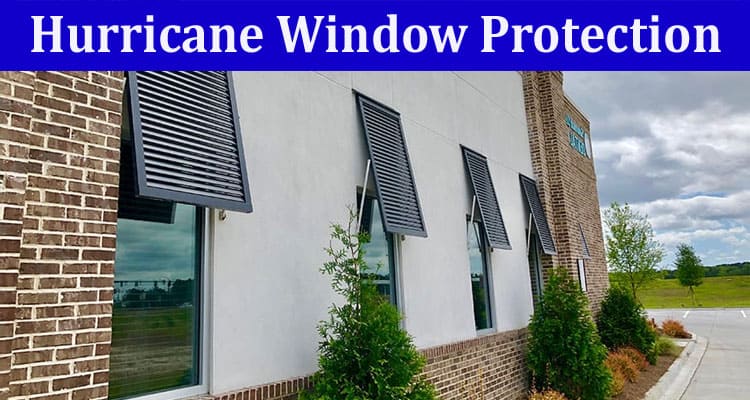If you live in a hurricane-prone region, there are several ways to protect your windows. Duct tape and plywood can work, but a better option is to install hurricane-impact windows.
These windows are made of two sheets of glass with a polymer layer between them. Unlike traditional glass, which can shatter into dangerous shards, they are designed to stay intact during a hurricane.
Window Shutters
Windows are the most vulnerable areas of a home or business during a hurricane. A single rock or piece of debris can shatter them, leading to costly repair and possible water damage. It is why it’s essential to have the proper hurricane window protection in place before the storm arrives.
Window shutters are an excellent option for homeowners looking for something easy to use and look good. They are available in various styles and designs that fit the home’s architectural style. Some homeowners even get a discount on their insurance premiums for installing these products.
Roll-down shutters are permanently installed above windows and can be rolled down when a storm approaches. They are operated manually or by remote control. Bahama-style shutters are hinged and mounted over windows. They fold accordion-style when not in use. They can also be locked for added security.
Impact-Resistant Glass
Homeowners in hurricane-prone areas must board up their windows or install storm shutters. But homeowners and businesses that install impact-resistant glass can avoid the hassle of putting up boards or installing a set of heavy shutters.
A laminate layer of polyvinyl butyral — or PVB — is sandwiched between two sheets of glass in impact-resistant windows. This inner layer keeps the window panes together, even if one of them breaks. It can prevent bodily injury and property damage when shards of broken glass fly off and shatter against buildings or people.
To determine if your windows are impact-resistant, look for a mark in the corner of each windowpane. The mark will usually include the manufacturer’s name, date of manufacture, and technical specifications for what they can withstand. The glass may be annealed, heat-strengthened, or tempered. If the windows are not rated for hurricane-proof buildings, a professional installer can upgrade them with impact-resistant glass.
Polycarbonate Panels
Polycarbonate is a type of plastic, but it’s different from regular plastic because it can handle large amounts of pressure and is virtually unbreakable. It can withstand forces 250 times greater than glass and 30 times more than acrylic sheeting.
Because it is so much more brutal than glass or acrylic, transparent polycarbonate sheets have many uses. For instance, they are well-suited to greenhouses and patio canopy applications because they allow light in while resistant to harsh weather conditions.
In addition, polycarbonate can be sawed, milled, engraved, drilled, bent (hot), and glued with the same tools used to work with other plastics like acrylic. The only downside is that it’s susceptible to scratches, but abrasion-resistant polycarbonate forms are available for this problem. Polycarbonate panels also retain heat very well, so they make an ideal material for a greenhouse. They are also very lightweight. They are easy to transport and can be assembled quickly.
Plywood
Plywood is a standard method for protecting windows during hurricanes. It is cheap, convenient, and available at most hardware stores. However, it can be challenging to install. Especially in older homes, it may require the help of a professional to get the job done. Additionally, plywood cannot be used as a permanent solution and must be removed after the storm.
Use boards 8 feet wide and 16 inches tall to cover large windows for best results. Cut them to fit the window opening and ensure they overlap by four inches. Screw the boards to the studs around the window frame, not the trim, using galvanized anchors. Make sure that the holes are spaced every 12 to 16 inches. You can install security film over your windows on a budget. It will prevent the glass from shattering into dangerous shards and block out UV light that can fade carpets and fabrics. However, it does not keep the window from blowing in or dislodging from its frame.


